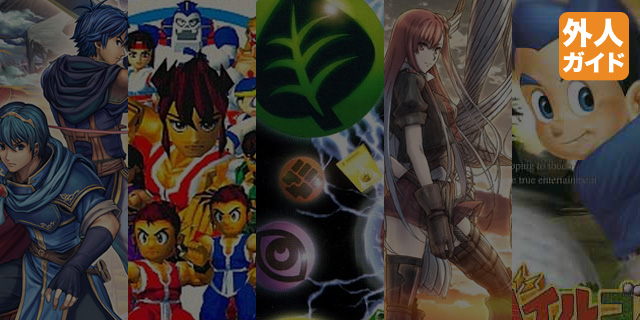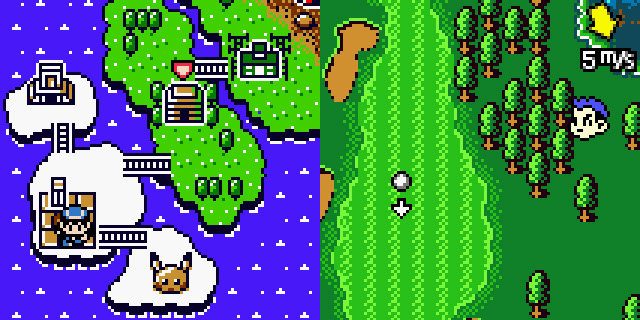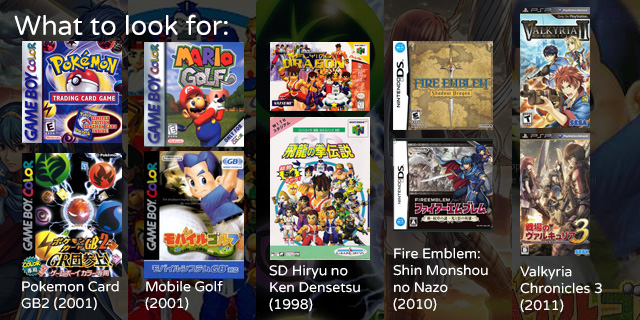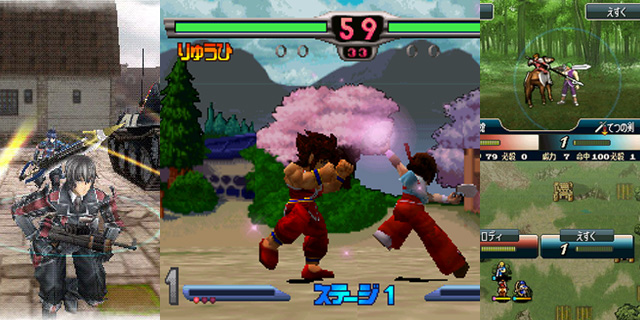
It’s a fairly common game development practice: build on a game’s engine and assets to make a new experience on the same platform with less time and effort. It’s resulted in some all-time great games, like The Legend of Zelda: Majora’s Mask and Grand Theft Auto: Vice City, and it’s also meant dev teams could deliver more than one title in a generation.
These games aren’t often the ones we miss; once a series starts being localized, it tends to stay that way for a while. But sometimes it happens! Thankfully, these are easy games to import, as you know the controls and systems well from the previous game we did get. In this edition of Gaijin Guide, I’m sharing five games that follow this formula and could be worth your time.

Mobile Golf
Follows: Mario Golf (GBC)
Here at Snackbar, we’ve long sung the praises of the Game Boy editions of Mario Golf. The RPG elements in the game just make playing more compelling, and the games themselves hold up astoundingly well. Mobile Golf is, for all intents and purposes, the Game Boy Color game again, with new courses and swapped-out player characters. Two factors kept this one from the West: the end of the GBC’s lifespan and the game’s support for the Japan-only Mobile Adapter. You could play with friends through phone networks using the peripheral, and Mobile Golf was a pack-in of sorts. Still, even without that feature, there’s a lot in the game to enjoy.
Pokemon Card GB2: Here Comes Team GR!
Follows: Pokemon Trading Card Game (GB/GBC)
While a video game version of a card game version of a video game sounds a bit crazy, the Game Boy Color version of Pokemon Trading Card Game was a cool battling experience that replicated the fun of collecting and deck-building without the pesky money drain or constant need for other people. Developer Hudson Soft continued its efforts with a direct sequel, adding more recent sets and a second area of opponents to take on. And that’s just what the first game needed: more things to do and cards to use! You know we would have gotten this one in the States in the height of Pokemania, but it also fell victim to the GBC’s early obsolescence.

SD Hiryu no Ken Densetsu
Follows: Flying Dragon (N64)
N64 hybrid fighting game Flying Dragon is a bit of a favorite among certain members of our staff, and for good reason: the quirky characters and RPG mechanics of the game’s super-deformed mode make it memorable in an era with more than its fair share of blocky polygonal fighters. SD Hiryu no Ken Densetsu drops the more realistic half of the game and focuses on the good part, fleshing out the progression and equipment and building out a true story to the silly N64 fighting. Of course, with the language barrier and no translation in the works, you won’t be able to enjoy the story, but the equipment is reasonably usable with trial and error, and the fighting’s the same bizarre-but-lovable fare from its predecessor.
Fire Emblem: Shin Monshou no Nazo
Follows: Fire Emblem: Shadow Dragon (DS)
While Shadow Dragon wasn’t exactly the Fire Emblem series’ finest moment due to working from dated Famicom scripts and character designs, it set the stage in many ways for the much-improved Awakening. Between the two, though, was a logical follow-up: Shin Monshou no Nazo. You’d think that a follow-up to the remake of the first game would be a remake of the second game, but that’s not exactly the case. Instead, it’s a remake of the second half of the third game, Monshou no Nazo, as it already remade the first game on the Super Famicom and then tacked on a sequel campaign. Even more of the Awakening ideas pop up here, like a customizable protagonist character, and it’s definitely worth a look for fans of the formula.

Valkyria Chronicles 3
Follows: Valkyria Chronicles II (PSP)
Most of the items in this list are about games continuing the decisions made in the previous game, but Valkyria Chronicles 3 is different. Instead, it abandons many of the second title’s ideas in favor of a move back toward the PS3 original’s plot, structure and general tone. It’s still on the PSP, so you’ll still have segmented maps and limited visual capabilities, but the work by pinch-hitting developer Media.Vision does an admirable job of advancing what it can. The adventure takes place in parallel to the first game, following a squad designed to leave no records and generally be lost to history, so you’ll weave in and out of areas and battlefields of the Second Europan War and cross paths with Welkin and company.
In the next edition of Gaijin Guide, Graham takes a look at the localization outlook in the post-E3 game landscape.



















